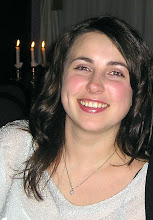Did you know that colour can affect your mood and behaviour? I'll bet you've heard it but don't really know how it works. Colour association and psychology can affect the way you feel, how you perceive others and how they perceive you, how you feel about a business; their image and logos, and how you behave in certain situations.
BLUE
Emotional: serene, peaceful, harmony, tranquility, airiness, melancholy, depression
Physical: can lower blood pressure, cools, relaxes, can slow respiratory rate
Behavioural: conservative, loyal, responsible, dependable, conservative, rigid
Blue is a colour that is often chosen for uniforms (police officers, public service) because it connotes dependability, authority, and reliability while being non-threatening.
It is preferred by most people as it invokes images of sea, sky and traquility (in softer hues).
Depresses the appetite and is a poor colour choice for restaurants.
GREEN
Emotional: balanced, secure, envy, detached
Physical: nourishing, nurturing, refreshing, rejuvenating
Behavioural: generous, moderate, inexperienced
Green is a poor business colour as it is associated with inexperience and personal gratification, though it continues to rise as a colour and term for environmentally friendly businesses.
Green invokes feelings of freshness, prosperity, and healing and is a great colour for bedrooms.
YELLOW
Emotional: radiant, cheerful, happiness, hope, nervous, anxious, irritable
Physical: can sharpen memory and stimulate intelligence, can increase irritability and agitation
Behavioural: people are said to be more argumentative in a yellow room
Though yellow is a joyous, happy colour, too much of it can cause anger or annoyance. Softer yellows, such as cream, butter, and bisque (hmm...all food names) are the best choice for interior spaces, while bolder choices, like lemon, gold and banana, are best for accessories or clothing. An intense yellow in a baby's room can cause sleep disturbances and irritability.
ORANGE
Emotional: lively, warm, inspirational, optimistic
Physical: decreases irritability and hostility
Behavioural: extroverted, sociable, friendly, cheap, gaudiness
Orange is a popular colour that appeals to many people as it is undemanding, fun, and is less intimidating than red. It can also be seen as cheap or inexpensive (Home Depot, anyone?).
RED
Emotional: passionate, exciting, hot, bold, volatile, intimidating
Physical: can increase blood pressure, respiratory and heart rate, adrenaline production
Behavioural: sensuous, courageous, aggressive, impulsive, overbearing
Red is a great colour for a dining room or in a restaurant as it increases your appetite. People who wear red are said to be confidant and want to stand out. Be careful using red in your home as it can make your walls visually advance and can cause a room to feel warmer than it really is.
VIOLET
Emotional: spiritual, imaginative, contemplative, lonely, melancholy
Physical: can lower blood pressure, can decrease appetite
Behavioural: creative, noble, philosophical, wealthy, isolated
Violet is a colour that is often associated with royalty because at one time, only the very wealthy could afford the dyes. Lower class people wore mainly brown and green.
Violet combines the power of red with the calming properties of blue, making it a popular colour choice.
PINK
Emotional: affectionate, romantic, feminine
Physical: weakens muscles, stimulates sweet cravings, calms and decreases stress
Behavioural: subdued, gentle, indulged
While pink will always be a go-to choice for babies and young girls, many adults would not choose this colour for their interior space.
Many prisons will paint the cells of dangerous offenders pink because of it's tranquilizing properties.
BROWN
Emotional: stable, sturdy, earthy, bored
Physical: dulls the senses, stimulates chocolate cravings
Behavioural: reliable, practical, casual
Associated with stability, dependability and reliability (UPS is a prime example). Not a great colour to wear to an interview as it makes one appear dull and lacking in authority. A great neutral in home decor that can be paired successfully with almost any other colour.
WHITE
Emotional: innocent, hopeful, pure, sterile, cold
Physical: no effect
Behavioural: idealistic, cleanliness, indecisiveness
An all white room is stressful because it reflects too much light. You can avoid this by using tone-on-tone whites and lots of texture to absorb some of the light.
BLACK
Emotional: aloof, mysterious, power, intimidating, fear
Physical: depresses
Behavioural: dignified, sophisticated, evil, rebellious
Black is a great multi-dimensional colour that can be used in traditional or contemporary interiors as it can be bold, graphic, elegant, classic and neutral. As we all know, wearing black makes you appear slimmer, but it is perceived that people who wear all black do not want others to invade their space.
GRAY
Emotional: resigned, steady, reliability, authority, gloomy, depressing, dull
Physical: no effect
Behavioural: discerning, mature, wisdom, humilty, boredom
Gray is a popular neutral for homes and fashion. Changing gray's undertones allow it to work in a multitude of palettes, providing relief from stronger colour choices. Gray is also a professional colour that is often used for uniforms and business suits.
KITCHEN DESIGN IN VANCOUVER - PATRICIA GRAY INC.
7 years ago



No comments:
Post a Comment